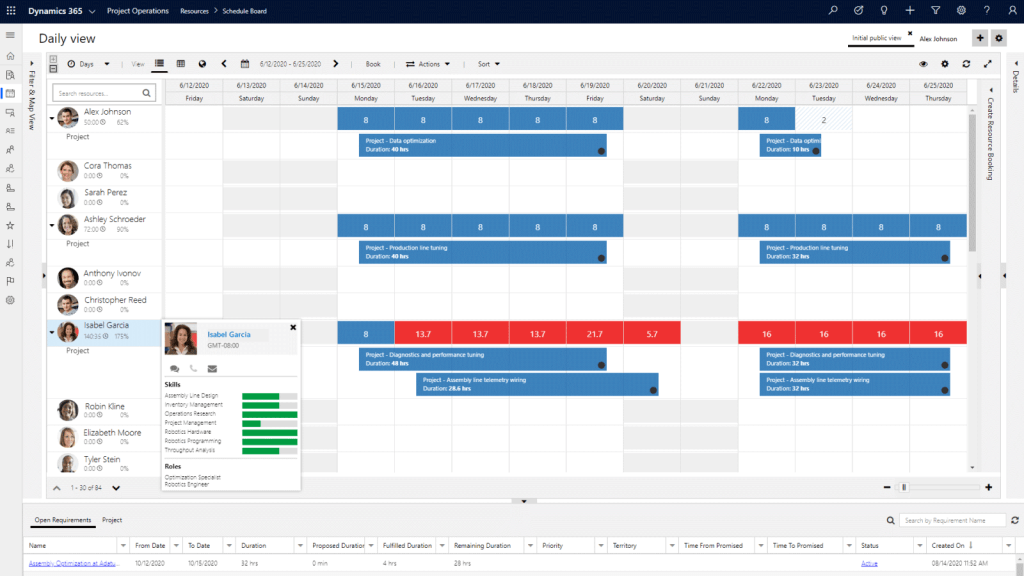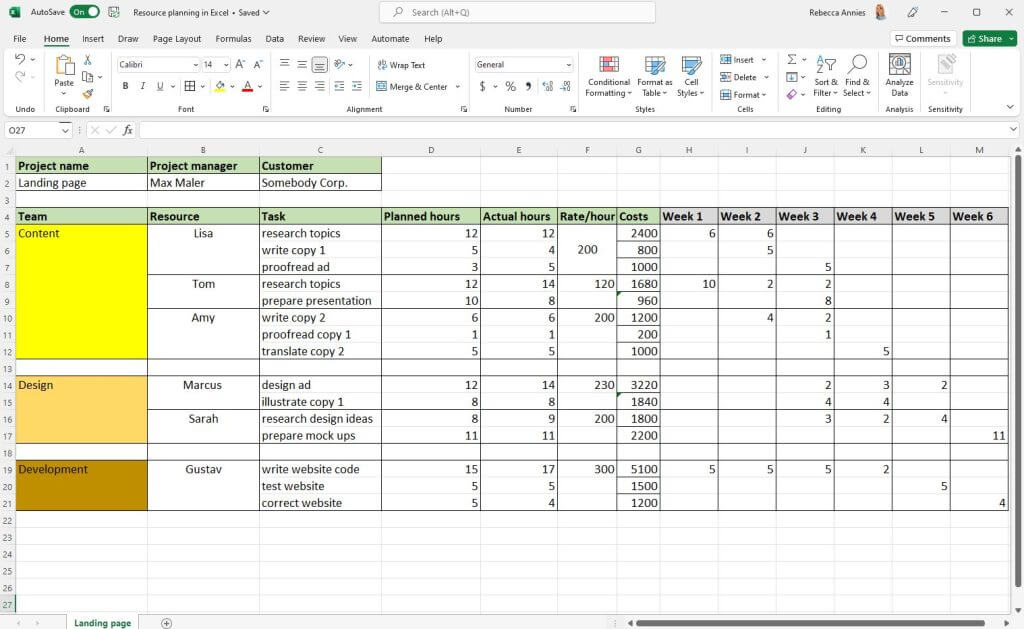
5 reasons why you shouldn’t manage your projects in Excel
Microsoft Excel is like the swiss army knife of office software – you can do anything with it!
Or can you?
Due to its flexibility, businesses use Excel for a lot of different things. However, many of these things could be done significantly better with other tools. Among them: project management.
The spreadsheet program is often the immediate answer when companies need a tool to manage their projects. It is easy to see why:
- Most companies use Microsoft 365 (previously known as Office 365), which includes Excel
- A lot of people at least have a basic understanding of how it works
- Using Excel means they do not have to invest in another project management software
- People are slow to embrace unfamiliar solutions
- Implementing a professional project management solution takes time and effort
And Excel certainly is an acceptable tool to manage projects – up to a certain point. If your business only needs to manage a few projects that are not overly complex (e. g. all hourly rates are the same, few dependencies between tasks) and involve just a small number of team members, you will probably not see the need for a dedicated project tool.
Why Excel is limited as a project management tool
However, once your projects get more numerous and complex, Excel is no longer the most advisable solution. Here are five reasons why this is the case:
1. Keeping track becomes difficult
The more complex the project, the harder it gets to obtain a complete picture of your projects in Excel. For one, the project plan will be too big to fit into one view. Secondly, you will need more than one spreadsheet for different aspects of your projects (the project plan, timesheets, billing spreadsheets etc.), having to switch back and forth between them.
2. Collaboration is tricky
Cloud computing has made working on files together a lot easier. No more mailing the latest version around to everyone, thank heavens.
However, collaborating in Excel Online is still not ideal. With no way to comment or notify people of assignments, the risk of errors and oversight persists. And it only increases with more people working on the same file.
An important question is also often left unanswered: who is responsible for maintaining the file and checking it for accuracy? Or, in other words: who is the designated spreadsheet wrangler?
3. Maintenance requires too much effort
Creating a spreadsheet that meets your business’s project requirements is time-consuming. You either have to build something from scratch or customize a generic project template.
And the work does not stop there. You better hope your project plan does not change because changing and updating details is cumbersome. Then again, when has a project plan ever changed, right?
Maintaining an Excel project file takes up a lot of time that could be spent more productively.
4. Excel does not provide project-specific functionality
While Excel can certainly be used to proficiently plan projects, managing them is a different matter. To efficiently deliver projects, certain features are a must have:
- Time and expense tracking
- Project task dependencies
- Project task assignments
- Team member notifications
None of these Excel can offer.
To assign tasks in Excel, for example, you have to either add a field containing a team member’s name or use color coding. Again, if your project plan is simple enough, this may work. If it is not, it gets tricky. You can imagine the difficulty of reassigning tasks.
This lack of features can be made up for with manual work of course. But you do not need us to tell you that this will cost you in efficiency.


5. Reporting is complicated
Excel also has no built-in reporting features. To create a report, someone will have to spend quite a bit of time creating one. And they better know what they are doing if they want to include Gantt charts.
To create a report, you need to create a new version of the file with the data in question. The whole process is manual work – formatting, editing, updating and checking data.
Reports will not look nearly as nice as those created in other tools either.
When to switch to a professional project management software
Once maintaining an Excel-based project management solution is a task in and of itself, it is time to look for a professional project management solution that fits your business’s needs. One that streamlines processes, centralizes data, provides the right tools for all involved and works as a collaboration platform.
Knowing the solution very well from the start, we recommend taking a closer look at Microsoft’s project management solution Dynamics 365 Project Operations.
| Project management feature | Excel | Dynamics 365 Project Operations |
| Data visualization (charts, graphs, etc.) | ||
| Data import/export | ||
| Real-time updates | ||
| Time and expense tracking | ||
| Resource management | ||
| Visualization of task dependencies | ||
| Collaboration | ||
| Forecasting | ||
| Automated reporting | ||
| Invoicing tool |
If yours is a project-centric organization, you should consider a project management software an essential resource. It is to your business what machinery is to manufacturers – important infrastructure to ensure success.
FAQ:
Why is Excel not ideal for project management?
The management of complex projects or several projects at the same time becomes messy rather quickly. Firstly, it is hard to keep an overview in a spreadsheet. Secondly, Excel was not developed for project management and is therefore lacking some project-specific functionalities such as time tracking, visualization of task dependencies or resource allocation. Thirdly, updating project plans and generally maintaining a structured file requires a lot of time. And finally, collaboration is tricky in a shared Excel file.
What are the limitations of Excel?
While Excel is very well suited for operations like data organization and analysis, calculations, and spreadsheet functionality, it soon reaches its limits when it comes to project management and reporting. Unlike dedicated project management software, Excel has no built-in features for time and expense tracking, resource assignment, depiction of task dependencies, or reporting. Collaboration in teams is also less comfortable than with Dynamics 365 Project Operations, for instance.
Why is Microsoft Dynamics 365 Project Operations better suited for project management than Excel?
Dynamics 365 Project Operations unifies all project-related processes of a service company in one solution, from lead to billing. The solution is compatible with other Microsoft products and many third-party applications, in case additional or specialized functionality is needed.











